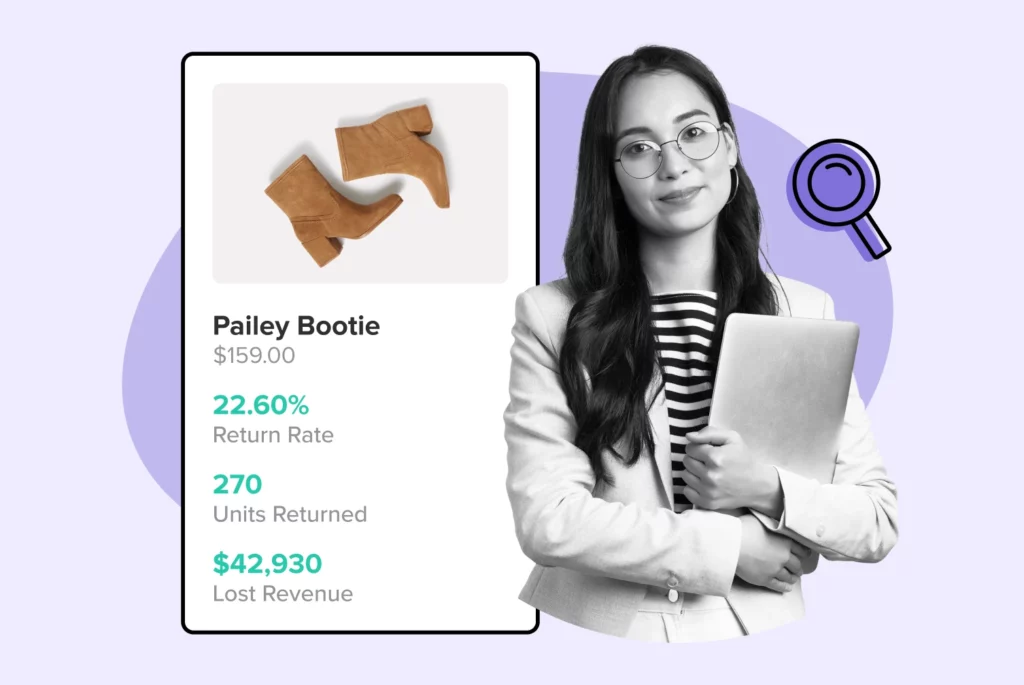
Returns: Enhancing Customer Experience & Products with Data
Learn how collecting data can enhance customer experience & optimize product development, unlocking the full potential of returns management.
Shipping, Tracking & Notifications
Boost customer experience and reduce support tickets
Realtime order and shipment tracking
Proactive order and shipping notifications
AI-Enhanced Discounted Labels
Predictive pre-purchase estimated delivery dates
Self-Serivce branded order tracking
Effortless experience delivered
Identify and Resolve Order Issues
Realtime order and shipment tracking
Make returns profitable and delight customers
Flexibility to define any return destinations & conditions
Simplify returns for your customers and team
Incentivize exchanges over returns
Returns management made easy for your team
Returns management made easy for your team
Understand why your customers are returning
In-Store & Curbside Pickup
Unify the online and the in-store experience
Hassle-free pickup experience for customers
In-Store dashboard to keep operations streamlined
In-Store and Online orders unified
Drive foot-traffic to your stores
Shipping, Tracking & Notifications
Boost customer experience and reduce support tickets
Realtime order and shipment tracking
Proactive order and shipping notifications
AI-Enhanced Discounted Labels
Predictive pre-purchase estimated delivery dates
Self-Serivce branded order tracking
Effortless experience delivered
Identify and Resolve Order Issues
Realtime order and shipment tracking
Make returns profitable and delight customers
Flexibility to define any return destinations & conditions
Simplify returns for your customers and team
Incentivize exchanges over returns
Returns management made easy for your team
Returns management made easy for your team
Understand why your customers are returning
In-Store & Curbside Pickup
Unify the online and the in-store experience
Hassle-free pickup experience for customers
In-Store Dashboard to keep operations streamlined
In-Store and Online orders unified
Drive foot-traffic to your stores
Boost customer experience and reduce support tickets
Realtime order and shipment tracking
Proactive order and shipping notifications
AI-Enhanced Discounted Labels
Predictive pre-purchase estimated delivery dates
Self-Serivce branded order tracking
Effortless experience delivered
Make returns profitable and delight customers
Flexibility to define any return destinations & conditions
Simplify returns for your customers and team
Incentivize exchanges over returns
Returns management made easy for your team
Equip your team for precise return checks.
Understand why your customers are returning
Unify the online and the in-store experience
Hassle-free pickup experience for customers
In-Store Dashboard to keep operations streamlined
In-Store and Online orders unified
Drive foot-traffic to your stores
Find the answer to all your questions
Take a step by step trip through our functionality to see how we can improve your ecommerce processes.
Explore the most comon questions about WeSupply
Calculate the ROI that WeSupply can bring you
Request a no strings attached review of your current shopping experience and missed conversion opportunities
Read actionable articles on how to optimize your post-purchase experience and decrease support tickets
Get inspired by stories of how our customers implemented an effortless post-purchase experience
Wondering if WeSupply is a good fit for you? Read through our use cases to see how we can help you increase conversion & improve CX!
A Deep Dive into Top Companies' Order Tracking & Returns Strategy
Find the answer to all your questions
Explore the most comon questions about WeSupply
Calculate the ROI that WeSupply can bring you
Request a no strings attached review of your current shopping experience and missed conversion opportunities
Take a step by step trip through our functionality to see how we can improve your ecommerce processes.
Read actionable articles on how to optimize your post-purchase experience and decrease support tickets
Get inspired by stories of how our customers implemented an effortless post-purchase experience
A Deep Dive into Top Companies' Order Tracking & Returns Strategy
Wondering if WeSupply is a good fit for you? Read through our use cases to see how we can help you increase conversion & improve CX!
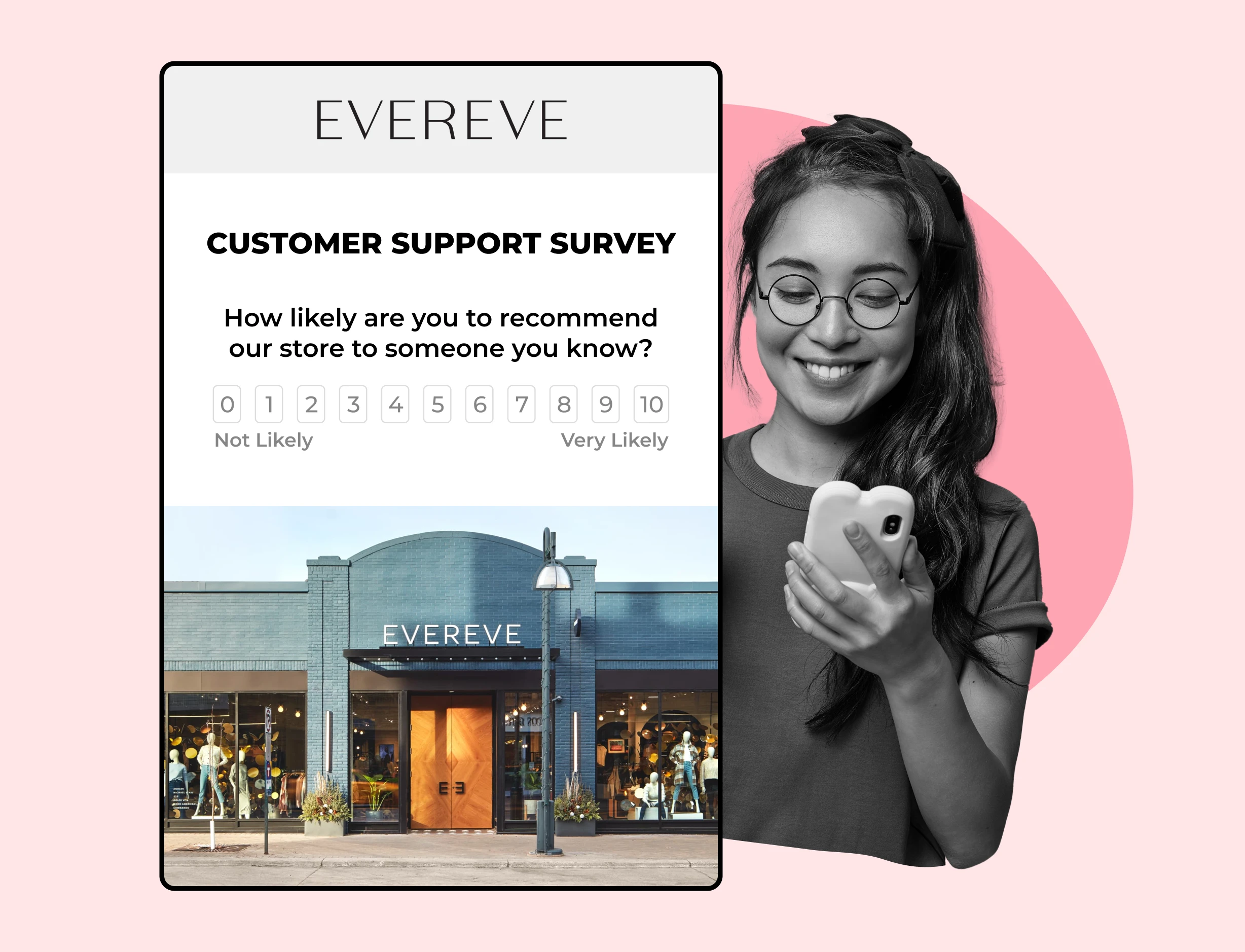
In the competitive world of e-commerce, understanding and utilizing customer retention metrics ecommerce is vital for success. These metrics not only help you retain customers but also maximize their lifetime value, build brand loyalty, and drive sustainable growth. Ready to unlock the secrets of customer retention for your e-commerce business? Let’s dive into the top 7 essential customer retention metrics ecommerce that every brand should monitor.
Understanding and monitoring customer retention metrics is essential for e-commerce businesses to foster loyal customers and maximize ROI.
Leveraging metrics such as CRR, CLV, RPR, NPS & Purchase Frequency can provide actionable insights into customer behavior to tailor marketing strategies for optimal performance.
Integrating effective returns management systems with personalized shopping experiences helps achieve long term success in e-commerce.
Using a powerful post-purchase optimization tool like WeSupply ensures an increase in customer satisfaction and retention through proper CSAT & NPS metric tracking, facilitating easy returns, and providing personalized updates. It also emphasizes clear communication of expected delivery dates, to reduce shipping anxiety.
In e-commerce, retaining customers is more cost-effective than acquiring new ones, resulting in a higher return on investment (ROI) through repeat purchases. This process fosters customer loyalty and a steady revenue stream. To gauge the effectiveness of your strategies and make necessary improvements, it’s important to measure customer retention.
Grasping pertinent customer retention metrics allows for a more comprehensive comprehension of your store and customers’ behaviors. Monitoring metrics such as:
Monthly recurring revenue
Customer churn rate
Customer lifetime value
Repeat purchase rate
Net promoter score
can help e-commerce businesses understand their financial stability and the effectiveness of their customer retention efforts. Focusing on customer retention can lead to reduced expenditures, increased profits, and eventual mastery of e-commerce.
Retaining loyal customers in e-commerce can lead to increased revenue, referrals, and positive reviews. Loyal customers generate a continuous revenue stream and contribute to building a positive reputation for your brand. Cultivating customer loyalty and driving long-term success for your e-commerce business can be achieved through exceptional customer service, personalized content and product suggestions, establishment of an online community, and customer nurturing via emails.
Personalization can be an effective way to increase customer loyalty. By understanding the unique preferences and needs of your customers, you can tailor your offerings to meet their expectations. A positive and personalized experience can assist in retaining customers, motivating them to promote your brand, and attracting additional customers to your e-commerce store.
Customer Retention Rate (CRR) is a key metric for e-commerce businesses, reflecting the percentage of customers who continue to make purchases over time. A high CRR indicates a loyal customer base and can lead to increased revenue and profitability. On the other hand, a low CRR signals potential issues in customer satisfaction or product quality that may require further investigation and improvement.
Metrics such as Customer Retention Rate (CRR) can assist businesses in identifying areas that need improvement and in developing strategies aimed at encouraging more customers to make multiple purchases. E-commerce businesses can enhance their CRR and promote long-term growth by:
Analyzing customer feedback from recordings and surveys
Optimizing processes to promote repeat purchases
Converting casual shoppers into loyal brand advocates
Customer Retention Rate is an indispensable metric for e-commerce businesses to monitor and comprehend in order to optimize long-term customer worth and profitability. Recognizing the importance of this metric and executing strategies to enhance it, businesses can guarantee continual growth and a devoted customer base. To achieve this, it’s crucial to calculate customer retention rate and analyze the results.
To calculate CRR, follow these steps:
Select a period of time.
Subtract the amount of new customers acquired during that time frame from the total amount at the end.
Divide the difference by the number of customers at the beginning.
Multiply the result by 100.
Customer Retention Rate can be enhanced through personalized marketing campaigns and customer satisfaction initiatives. By understanding the unique preferences and needs of your customers, you can tailor your offerings and communication to meet their expectations. Addressing website bugs and reviewing qualitative insights from session recordings, surveys, and feedback widgets can identify issues that may be causing customer dissatisfaction, leading to an improved CRR.
WeSupply helps to enhance Customer Retention Rate by leveraging analytics and personalized marketing strategies. By utilizing tools to track CSAT and NPS, WeSupply helps businesses understand and adapt to customer preferences. Its fully customizable tracking page not only maintains an engaging shopping experience but also boosts brand awareness through tailored product recommendations, promotions, and storytelling. Adding social media links and other communication methods further elevates the post-purchase journey, ensuring that every customer interaction is a step towards enhanced loyalty and satisfaction.
Customer Lifetime Value (CLV) is an important metric used to understand the potential value of a customer. It helps in estimating how much money a customer could potentially spend on an e-commerce business in the future. CLV provides businesses with insight into the worth of a customer and the amount they can feasibly spend on customer acquisition and retention. CLV stands for Customer Lifetime Value. Generally, a higher CLV is beneficial for any company. If you are striving to enhance retention, you should observe CLV augmenting over time.
The formula for determining Customer Lifetime Value (CLV) in e-commerce is: (Average Purchase Value x Purchase Frequency) x Average Customer Lifespan. Monitoring CLV allows businesses to gain insights into customer behavior, preferences, and trends. This information can be used to develop targeted marketing strategies, optimize pricing, and make decisions based on data to drive revenue growth.
Customer data analysis is essential for e-commerce success, as it provides valuable insights into customer behavior, preferences, and trends. By analyzing customer data, e-commerce businesses can:
Personalize their offerings
Improve customer experience
Increase customer satisfaction and loyalty
Identify opportunities for cross-selling and upselling
Optimize pricing strategies
Make data-driven decisions to drive revenue growth
Strategies to cultivate customer loyalty in e-commerce include:
Providing exceptional customer service
Personalizing content and product suggestions
Constructing an online community
Improving backend processes
Nurturing customers via emails
Establishing a customer loyalty program
Establishing a referral program
Utilizing social media
The implementation of these strategies can assist businesses in maximizing long-term customer value and profitability, leading to sustainable growth in the e-commerce industry.
WeSupply’s Return Analytics plays a crucial role in maximizing long-term customer value and profitability for e-commerce businesses. By analyzing customer data, especially focusing on returns by region and specific return reasons, businesses gain deep insights into customer behavior and preferences. Understanding these aspects not only reveals why customers return items but also how these returns impact customer lifetime value. Such insights enable businesses to tailor their offerings, enhance customer satisfaction, and ultimately drive higher profitability.
Repeat Purchase Rate (RPR) indicates the percentage of customers who return to make additional purchases, helping businesses identify and nurture loyal customers. A high RPR suggests a strong relationship with customers and the potential for increased revenue and profitability. On the other hand, a low RPR may indicate issues with customer satisfaction, product quality, or marketing efforts that require further investigation and improvement.
The Repeat Purchase Rate (RPR) is calculated by choosing a timeframe, dividing the number of customers who made multiple purchases by the total customer count, and then multiplying the result by 100. RPR provides an understanding of customer loyalty and repeat business, as well as an insight into the behavior and preferences of customers. Monitoring RPR allows businesses to detect trends, segment customers, and create strategies for targeted engagement to enhance customer satisfaction and loyalty.
The implementation of loyalty programs has proven to be an effective method for enhancing customer retention. A loyalty program is a system used to incentivize customer retention by providing loyalty points for each purchase.
Additional strategies for increasing repeat purchases and attracting repeat customers in e-commerce include:
Implementing a points program
Using social media
Sending targeted emails
Collecting data to create customer segments
By implementing these tactics, businesses can enhance repeat purchases, build brand loyalty, and foster long-term customer relationships that drive sustainable growth in the e-commerce industry.
WeSupply is a robust platform designed to enhance repeat purchases and build brand loyalty in e-commerce through several key features:
Estimated Delivery Date: Reduces shipping anxiety with clear delivery timelines, following Amazon’s model for improved customer trust.
Incentivize Exchanges Over Returns: Promotes opting for store credit, redirecting customers back to the product catalog, and encourages exchanges.
Branded Tracking Page: Provides a unified brand experience with centralized order management and reduces dependence on third-party tracking.
Self-Service eCommerce Returns: Simplifies the return process with a quick, three-step system and autogenerated QR code return labels.
These features collectively work to streamline the customer experience, encourage repeat business, and build stronger brand loyalty. Discover how WeSupply can transform your e-commerce experience — Book a Demo today and take the first step towards seamless customer satisfaction and loyalty!
The Net Promoter Score (NPS) is a metric that gauges customer loyalty, satisfaction, and enthusiasm, offering valuable insights into customer relationships. It is determined by subtracting the percentage of customers who rate 6 or lower (termed ‘detractors’) from the percentage of customers who rate 9 or 10 (termed ‘promoters’). An excellent NPS benchmark is a score of 60 or higher, as suggested by Fred Reichheld, the inventor of NPS.
NPS data can be used to enhance customer retention by:
Identifying when action is needed to resolve any issues that may be hindering customers’ desire to shop at the online store
Leveraging NPS data to gain insights into customer satisfaction and loyalty
Pinpointing areas for enhancement
Locating advocates
Monitoring customer loyalty
Ultimately improving customer relationships and driving long-term growth in e-commerce.
Understanding and actively monitoring NPS is essential for e-commerce success, as it enables businesses to:
Identify areas for improvement
Implement targeted strategies to retain existing customers
Address customer pain points
Proactively detect issues that may be causing dissatisfaction
Enhance their NPS
Drive long-term growth
In e-commerce, NPS can be used to assess overall loyalty and satisfaction, identify areas for improvement, find advocates, and monitor customer loyalty. By analyzing NPS data and leveraging customer feedback, businesses can make informed decisions to drive revenue growth, enhance customer satisfaction, and ultimately, cultivate a loyal customer base that propels e-commerce success.
WeSupply emphasizes the critical role of CSAT and NPS in enhancing customer relationships. By leveraging these metrics, businesses can effectively fine-tune their post-purchase strategies, identify areas for improvement, and ensure customer delight. This data-driven approach enables targeted solutions, strengthening customer connections and fostering business growth.
PF (Purchase Frequency) is a measurement used to find out how frequently customers shop from a certain business or brand. It is evaluated over a particular period of time. Understanding purchase frequency is fundamental to recognizing customer behavior, preferences, and needs. It allows businesses to develop marketing strategies tailored to their customers, personalize communication, and anticipate customer behavior.
To determine Purchase Frequency, simply divide the number of orders within a given time period by the number of distinct customers within that same time frame. By monitoring PF, businesses can gain insights into customer loyalty, repeat business, and customer preferences, allowing them to optimize marketing campaigns and improve overall performance.
Businesses can predict and reduce future churn by conducting churn analysis, identifying retention opportunities, proactively detecting pain points, and implementing strategies to improve user engagement. This process is based on understanding customer behavior and patterns. Analyzing buying patterns can assist in strategic customer engagement by providing insight into customer behavior, preferences, and needs. This enables businesses to tailor their marketing strategies, personalize communication, and anticipate customer behavior, ultimately driving sustainable growth in e-commerce.
Typical purchasing behaviors in e-commerce include:
Impulse buying
Research-based buying
Repeat buying
Seasonal buying
Discount-driven buying
Social proof buying
Convenience-driven buying
By recognizing these behaviors and trends, businesses can segment customers and create targeted engagement strategies to improve customer satisfaction and loyalty, thereby enhancing e-commerce business growth.
WeSupply’s Analytics empowers businesses with data-driven insights for targeted marketing and strategic customer engagement. Understanding that the key to improvement is measurement, WeSupply provides tools to track like CSAT and NPS, crucial for fine-tuning the post-purchase experience. With detailed order level analytics, businesses can monitor the entire order process, including received, shipped, cancelled, and delivered orders, along with vital ‘grey areas’ like in-transit or out-for-delivery status. This comprehensive breakdown helps identify areas for optimization, from order fulfillment to delivery, ensuring a delightful customer experience and enhancing buying patterns analysis.
Revenue Churn Rate measures the percentage of customers who leave or decrease their spending, which indicates areas that need improvement in customer retention efforts. A high churn rate may signal issues in customer satisfaction, product quality, or the overall customer experience, indicating that businesses should take action to address these issues and retain valuable customers.
To calculate the customer churn rate, select a period, divide the number of customers who left during that period by the total number of customers at the start, and then multiply the result by 100. Monitoring the churn rate and adopting strategies to reduce it can help businesses enhance customer satisfaction, foster loyalty, and promote sustainable growth in the e-commerce industry.
Providing superior customer service, personalizing customer experiences, analyzing customer behavior and trends, and offering incentives and rewards for customer loyalty are all part of an effective customer retention strategy that may reduce customer churn and retain valuable customers.
Specifically, these strategies include:
Providing exceptional customer service by cultivating customer loyalty and trust, addressing customer issues and concerns efficiently, and providing tailored and proactive support.
Analyzing customer behavior and trends to better understand their needs and preferences, allowing for personalized experiences and targeted marketing efforts.
Offering incentives and rewards for customer loyalty, such as discounts, exclusive offers, or a loyalty program.
Establishing a positive brand reputation in the market, which can help build trust and loyalty among customers.
By implementing these strategies, businesses can increase customer satisfaction, reduce churn, and retain valuable customers.
Personalized experiences have a beneficial effect on customer churn rate in e-commerce. They facilitate engagement with customers, augment retention, reduce churn, bolster brand loyalty, and enhance customer satisfaction. Personalized communications and marketing messages are essential components in prompting customer consideration and driving conversions, ultimately leading to long-term e-commerce success and a loyal customer base.
WeSupply plays a pivotal role in reducing customer churn and enhancing retention by providing:
Branded Proactive Notifications: Offers high open-rate email and SMS notifications with personalized deals to encourage repeat purchases.
Branded Returns Portal: Creates a customizable, brand-aligned returns experience with intelligent return rules.
These features collectively ensure a superior customer service experience, personalize customer interactions, and foster loyalty, significantly contributing to a robust strategy for lowering churn and retaining valuable customers. Ready to transform your customer experience? Book a demo with WeSupply today and see the difference firsthand!
Product Return Rate is a key metric for understanding customer satisfaction and the efficiency of the returns process. A high return rate may indicate issues with product quality or description, as well as customer journey issues such as shipping and delivery errors and delays. On the other hand, a low return rate often implies higher customer satisfaction, which can contribute to long-term e-commerce success.
To measure the Product Return Rate, calculate the number of products returned in a specific time frame. Divide this figure by the overall number of orders made during the same period. By monitoring the product return rate and implementing an effective returns management system, businesses can significantly enhance customer satisfaction, optimize efficiency, and drive profitability.
In e-commerce, an effective returns management system is a well-defined plan or strategy that handles customer returns and ensures a seamless and efficient process. It involves effectively managing the flow of returned goods, addressing customer queries expeditiously, and implementing best practices to maximize customer satisfaction. A well-structured and effective return process can significantly influence customer satisfaction and loyalty, ultimately contributing to long-term e-commerce success.
Establishing a shopper-friendly returns policy, facilitating a fast and simple returns process for customers, analyzing returns data to gain insight into the common reasons behind them, automating the returns request process, generating automatic return labels, and keeping customers informed about the status of their returns are all essential steps in implementing an effective returns management system in e-commerce. By implementing these measures, businesses can enhance customer satisfaction, cultivate loyalty, and drive long-term growth in the e-commerce industry.
Simplify Returns for Your Customers and Support Team
Book a quick call with our experts to see how WeSupply can help you simplify the Return Experience with just a few clicks, reduce customer service calls and manual processing, notify your customer about their refund, automate returns and reduce user error.
WeSupply revolutionizes returns management, significantly boosting customer satisfaction with its efficient and customer-centric features:
Self-Service eCommerce Returns Center: Simplifies the returns process, offering instant credit to encourage exchanges over refunds.
Branded Returns Portal: Creates a personalized, omnichannel return experience.
Flexible Returns Rules: Adapts to various customer needs, reducing hassle.
Customer Return Feedback: Gathers data on return reasons, aiding in fraud prevention.
Autogenerated QR Code Return Labels: Facilitates easy, printerless returns.
Proactive Return Notifications: Keeps customers informed with high open-rate email and SMS updates.
Return Analytics: Offers insights into return patterns to improve product offerings.
Seamless Integration: Connects effortlessly with numerous third-party tools for a seamless return experience.
WeSupply’s approach not only enhances the post-purchase journey but also aligns with cost-saving strategies, making it a comprehensive solution for improved customer satisfaction in returns management. Experience the future of returns management with WeSupply. Book a demo now and elevate your customer satisfaction!
Customer retention strategies in e-commerce are of great importance as they enable businesses to:
Craft differentiated and personalized customer experiences
Comprehend and scrutinize user behavior
Invite feedback
Foster customer loyalty
It helps in establishing stronger and lasting customer relationships, propelling sustainable growth and triumph, and forming brand advocates who will revisit the business.
In e-commerce, key customer retention strategies include:
Sending exclusive promotional emails to repeat buyers
Developing email campaigns with promotional offers
Executing a customer retention plan to regularly review and enhance KPIs
Using zero-party and first-party data
Delivering a personalized shopping experience
Focusing on excellent customer service and support
Using appropriate tools for efficient communication and engagement.
By integrating these strategies, businesses can achieve e-commerce excellence and drive long-term success.
A comprehensive approach to customer retention is vital for sustainable business success. It allows businesses to:
Gain a deep understanding of customer behavior
Make decisions based on data to fuel business growth
Combine multiple e-commerce metrics to gain a comprehensive view of customer behavior
Make informed decisions to drive business growth
Adopting a holistic approach to metrics can provide a comprehensive view of the business performance. This approach enables businesses to:
Analyze revenue-driven metrics
Understand customer segmentation
Make data-driven decisions to optimize marketing campaigns
Improve overall performance
By adopting this approach, businesses can uncover new growth opportunities, maximize sales, minimize drop-off, and enhance e-commerce business growth.
In conclusion, customer retention metrics are essential for achieving long-term e-commerce success and building a loyal customer base. Understanding and utilizing these metrics allow businesses to optimize their strategies, personalize customer experiences, and foster customer loyalty.
Leverage the power of customer retention metrics and transform your e-commerce business into a thriving, customer-centric enterprise.
Embrace the potential of customer retention metrics and data-driven strategies to drive sustainable growth and cultivate a loyal customer base. By understanding customer behavior, preferences, and trends, you can tailor your offerings to meet their expectations and enhance their satisfaction.
Utilize the power of customer data and metrics to fuel your e-commerce success and build lasting relationships with your customers.
In this comprehensive guide, we’ve explored the top 7 essential customer retention metrics that every e-commerce business should monitor. By understanding and utilizing these metrics, businesses can optimize their strategies, personalize customer experiences, and foster customer loyalty. So, seize the opportunity to transform customer data into long-term e-commerce success and build a loyal customer base that propels your business forward.
WeSupply is instrumental for e-commerce brands focusing on key customer retention metrics. Leveraging analytics and personalized marketing, WeSupply tracks critical metrics like CSAT and NPS, enabling businesses to align with customer preferences and behaviors. Features like a customizable tracking page, proactive notifications, and a seamless returns process with insightful analytics enhance customer engagement and satisfaction. These tools collectively form a comprehensive strategy to boost loyalty, reduce churn, and transform post-purchase experiences into opportunities for growth and retention.
Self-Service Branded Order Tracking
Book a quick call with our experts to see how WeSupply can help you tell your brand story, promote new categories or showcase your latest sale. Our Branded Tracking Page is fully customizable by your team in less than 10 minutes.
Customer retention in ecommerce can be measured by calculating the customer retention rate, which is equal to (number of customers at the end of the time period – number of new customers) divided by the number of customers at the beginning of the time period multiplied by 100. Other KPIs to track for business growth include the repeat purchase rate and the number of customers acquired during the time period.
An acceptable repeat customer rate for ecommerce is 25-30%, backed up by Alex Schultz, VP of Growth at Facebook. He recommends that if a business can achieve 20-30% of customers returning each month and making purchases, they should see positive results.
Customer retention is essential in e-commerce, as it promotes customer loyalty and a steady revenue stream while also being more cost-effective than acquiring new customers.
WeSupply is a post-purchase platform designed to enhance the e-commerce customer experience. It focuses on customer retention and satisfaction through various features like order tracking, returns management, and personalized customer engagement.
WeSupply uses key metrics like Customer Satisfaction (CSAT) and Net Promoter Score (NPS) to understand customer preferences. Its personalized marketing strategies and customizable notifications help businesses improve customer satisfaction, thereby increasing retention rates.
Yes, WeSupply simplifies the return process with a Self-Service eCommerce Returns Center. It includes features like autogenerated QR code return labels, flexible return rules, and return analytics to understand customer behavior and improve product offerings.

Learn How To Create Successful Post Purchase Email Campaigns
Build an effective post-purchase email flow that helps you increase customer satisfaction and drive revenue growth!

Learn how collecting data can enhance customer experience & optimize product development, unlocking the full potential of returns management.

The importance of post purchase experience in the cosmetics industry grows. Focusing on customer satisfaction and loyalty in this fast-paced and competitive market is more crucial than ever, and it starts with understanding the entire customer journey.
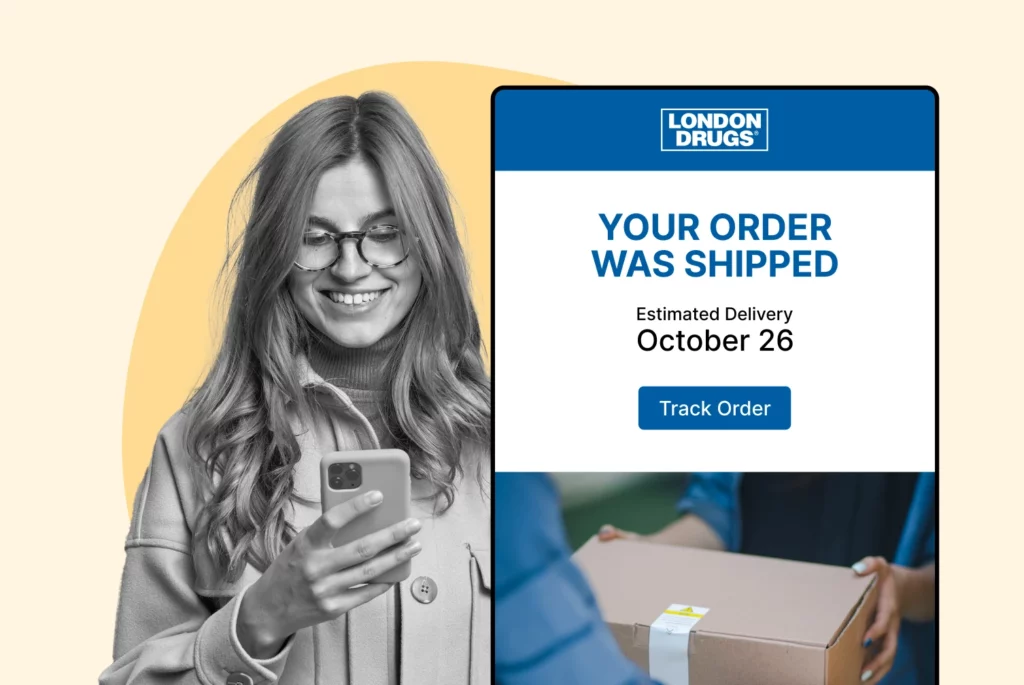
In this blog post, we’ll explore how automation strategies are enhancing the entire customer lifecycle, from personalized marketing campaigns to proactive support and issue resolution.
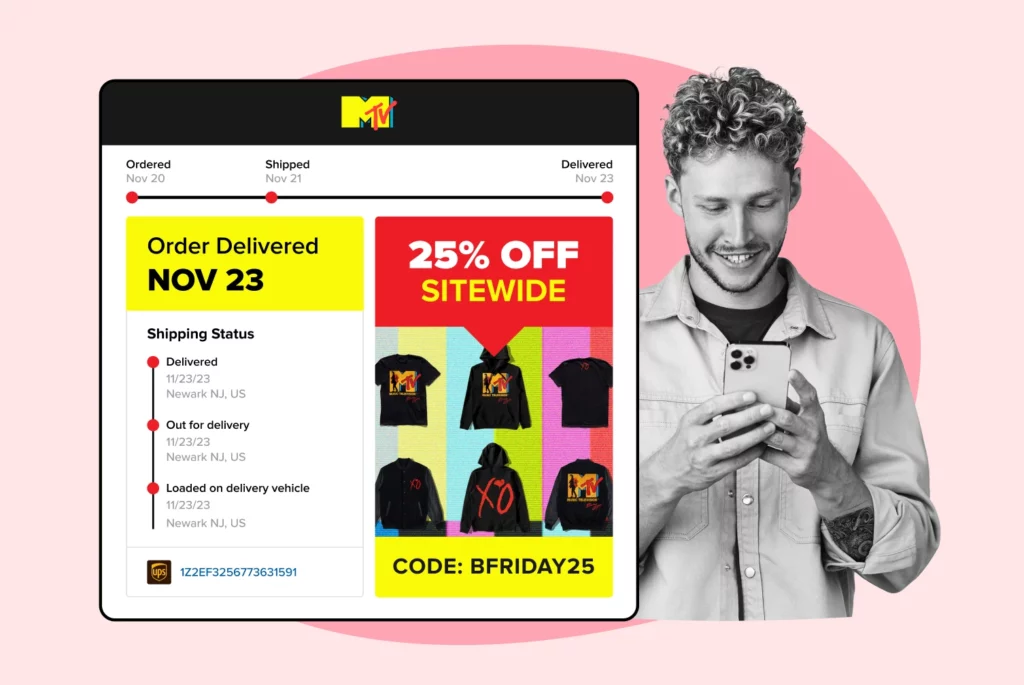
Creating a successful loyalty program strategy is essential during the holiday season, and it all starts with understanding the significance of customer loyalty BFCM during these crucial shopping days and beyond.
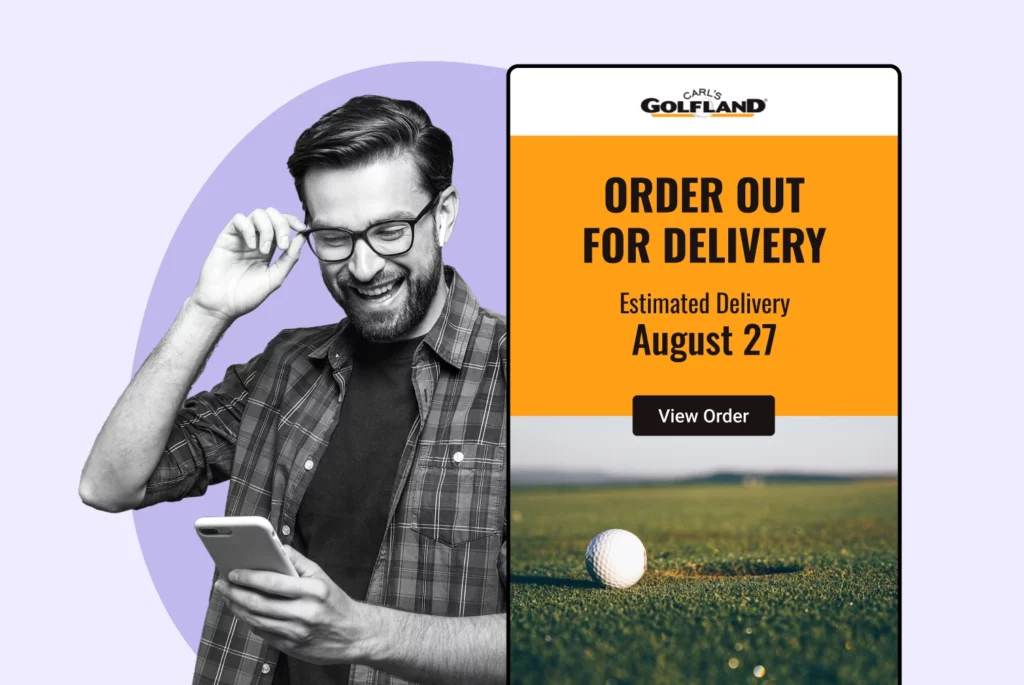
Get ready to dive deep into the world of customer retention and discover the secrets to keeping customers coming back for more.

In this blog post, we will unveil the six return experiences worst online and analyze the lessons learned from these retailers’ best and worst practices.
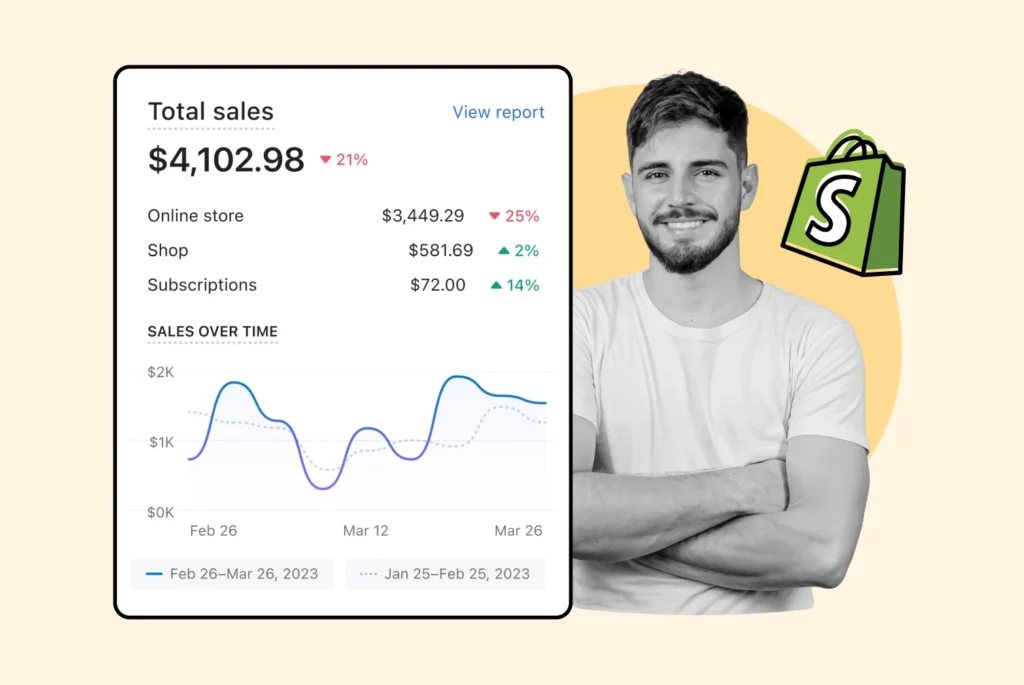
Get ready to transform your ecommerce store by turning churn challenges into opportunities!
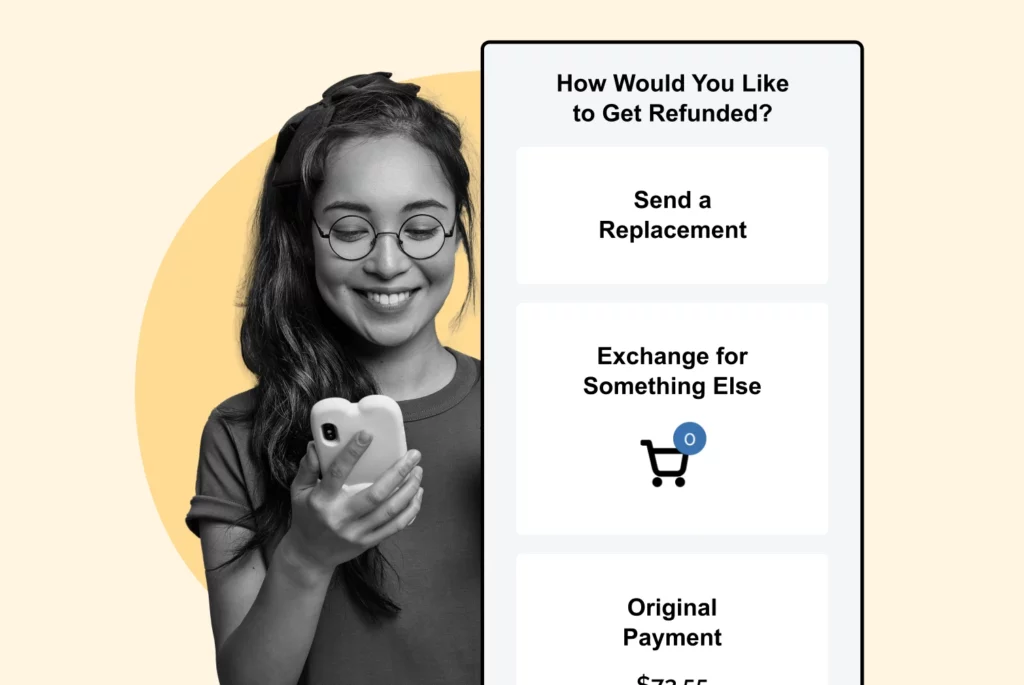
Discover the importance of returns in e-commerce and how a well-managed return process can improve customer satisfaction and drive business success.
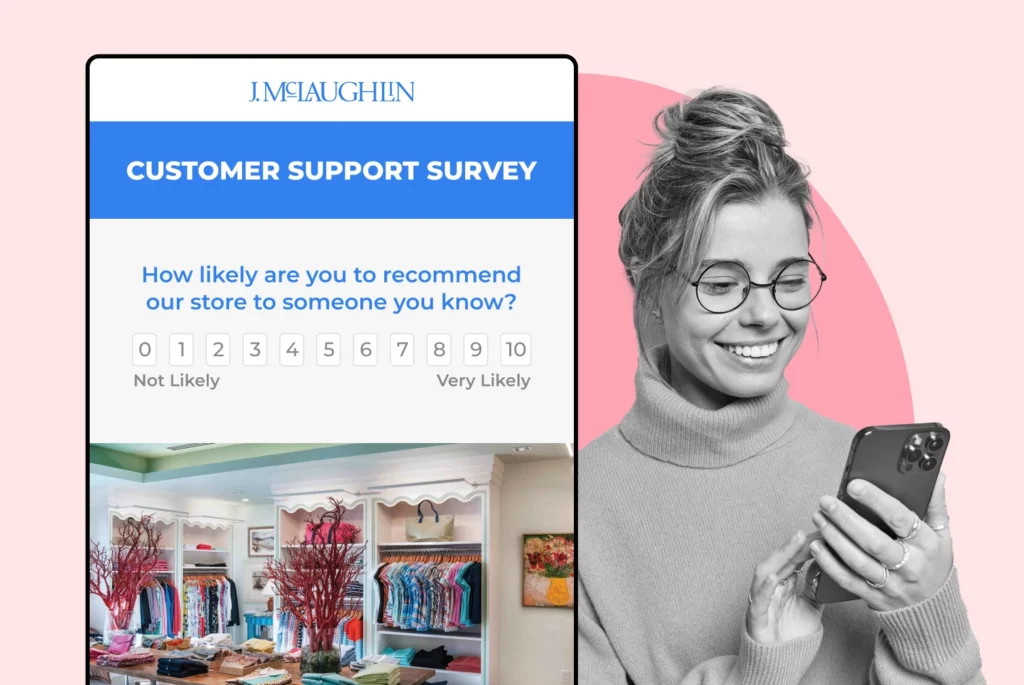
Understand, minimize, & prevent post-purchase cognitive dissonance, transforming the shopping experience for customers and businesses alike.